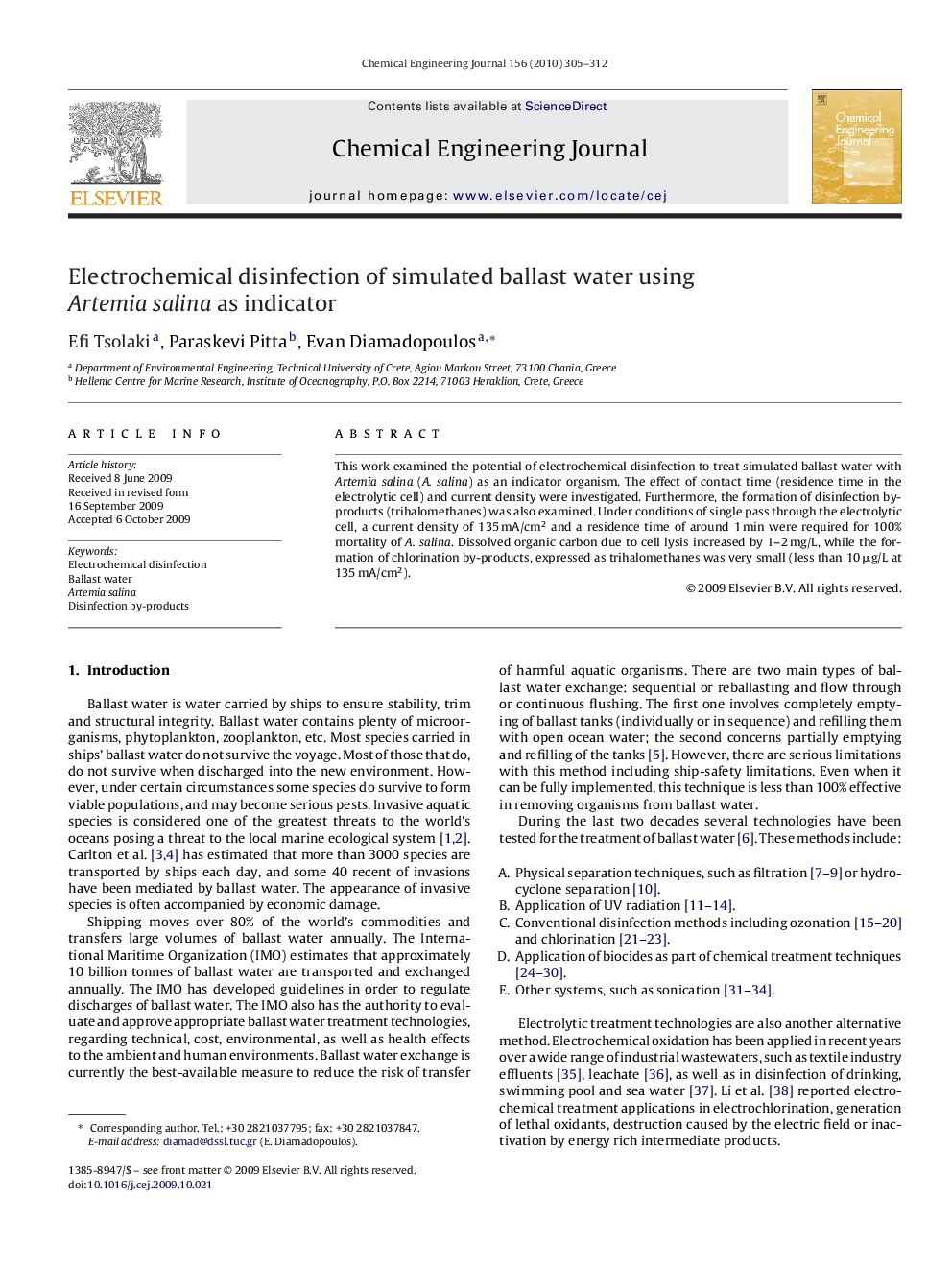| Article ID | Journal | Published Year | Pages | File Type |
|---|---|---|---|---|
| 152049 | Chemical Engineering Journal | 2010 | 8 Pages |
Abstract
This work examined the potential of electrochemical disinfection to treat simulated ballast water with Artemia salina (A. salina) as an indicator organism. The effect of contact time (residence time in the electrolytic cell) and current density were investigated. Furthermore, the formation of disinfection by-products (trihalomethanes) was also examined. Under conditions of single pass through the electrolytic cell, a current density of 135 mA/cm2 and a residence time of around 1 min were required for 100% mortality of A. salina. Dissolved organic carbon due to cell lysis increased by 1–2 mg/L, while the formation of chlorination by-products, expressed as trihalomethanes was very small (less than 10 μg/L at 135 mA/cm2).
Related Topics
Physical Sciences and Engineering
Chemical Engineering
Chemical Engineering (General)
Authors
Efi Tsolaki, Paraskevi Pitta, Evan Diamadopoulos,
